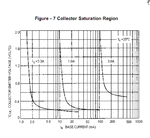raman00084
Full Member level 6

- Joined
- Nov 29, 2010
- Messages
- 375
- Helped
- 2
- Reputation
- 4
- Reaction score
- 2
- Trophy points
- 1,298
- Activity points
- 4,076
how to calculate transistor base resistor for load switching application that is
transistor as switch
collector to emitter voltage is 24v
base to emitter voltage is 5v
load current is 1Amps
what value of base resistor i must use, any formula?
transistor as switch
collector to emitter voltage is 24v
base to emitter voltage is 5v
load current is 1Amps
what value of base resistor i must use, any formula?





